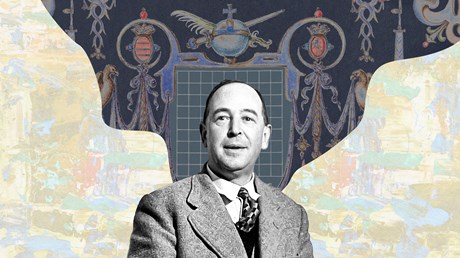C.S. Lewis Was a Modern Man Who Breathed Medieval Air
As both a writer and a scholar, his work hearkened back to a “slow, contemplative, symphonic world.”

In the prologue to The Lord of the Rings, J. R. R. Tolkien tells us two things about his beloved hobbits that identify them as medieval in their thinking and their behavior. First, their relationship to technology is distinctively premodern: “They love peace and quiet and good tilled earth: a well-ordered and well-farmed countryside was their favourite haunt. They do not and did not understand or like machines more complicated than a forge-bellows, a water-mill, or a hand-loom, though they were skillful with tools.”
Second, their taste in books runs toward old masters like Dante, Chaucer, and Thomas Aquinas; they would not have enjoyed or understood the radical originality of novels by modern writers like James Joyce, Samuel Beckett, Marcel Proust, or Virginia Woolf. Indeed, “they liked to have books filled with things that they already knew, set out fair and square with no contradictions.”
Later in his epic, Tolkien extends this medieval ethos to the members of the Fellowship. When Gandalf questions Saruman the White as to why he is now Saruman of Many Colors, he is gravely disturbed by Saruman’s reply.
“‘White!’” he sneered. ‘It serves as a beginning. White cloth may be dyed. The white page can be overwritten; and the white light can be broken.’” Gandalf responds in turn, rebuking Saruman’s Enlightenment understanding of wisdom: “In which case it is no longer white … and he that breaks a thing to find out what it is has left the path of wisdom.”
Aragorn, who will eventually be crowned king of Gondor, expresses an equally medieval understanding of morality when he responds to the confusion of Éomer, nephew of King Théoden …
